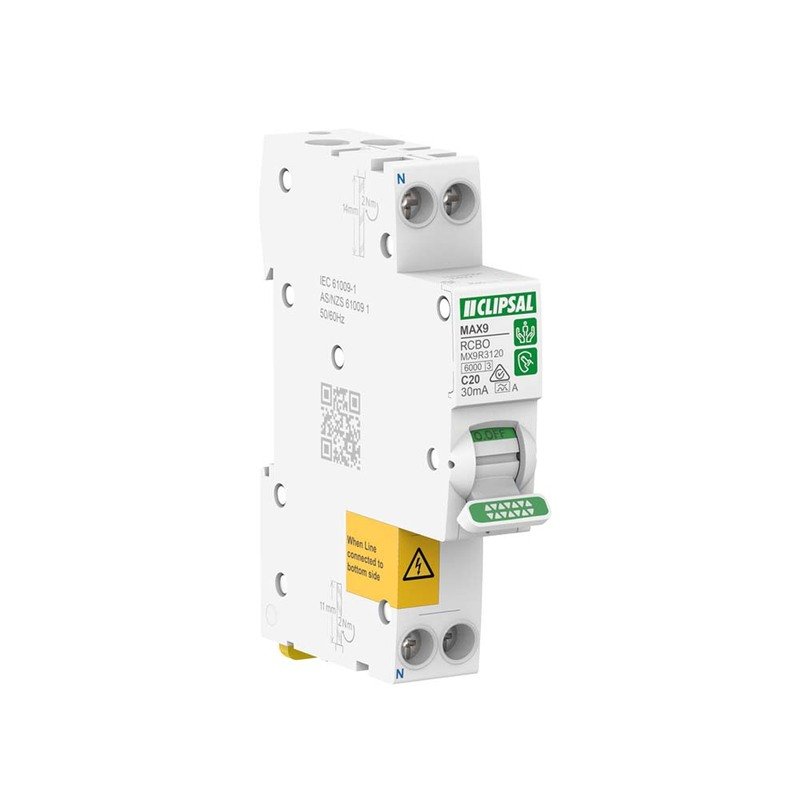
Residual Circuit Breaker
Do you need an RCBO?
In our modern world, there often seems to be an endless array of electrical gadgets deemed essential for daily living. While some items may indeed be luxuries, distinguishing between necessities and upgrades can be challenging. That’s where we come in. We’re here to help you clarify your property’s safety needs and which items are simply enhancements for convenience.
Residual Current Circuit Breakers with Overload (RCBOs) fall into the “absolutely necessary” category. They serve a critical function: protecting you, your family, and anyone using electricity in your home from the potentially dangerous effects of electrical overloads or current leakages.
Why RCBOs Are Necessary
RCBOs, or Residual Current Breakers with Over-Current, are not just essential components for ensuring the safety of your electrical system. They are your peace of mind, protecting you and others using electricity from the harmful effects of electrical overloads and current leakages. If you're not familiar with RCBOs, here’s everything you need to know about this crucial safety device.
What is an RCBO?
An RCBO is a type of safety switch installed in your switchboard. It functions as a circuit breaker that trips the electrical circuit in case of a power overload, helping to prevent electric shocks and other hazardous situations.
How Does an RCBO Work?
An RCBO combines residual current detection with overcurrent protection in a single device. It monitors the electrical flow and can detect two main issues:
Overload in a Specific Circuit: If too much current flows through a circuit, it could potentially damage electrical devices such as your computer, TV, or kitchen appliances, or pose a risk to users.
Leakage from Live to Earth Wire: If there is an unintended path for current, indicating a fault in the system, such as a wire touching a metal part of an appliance or a water pipe.
When either of these conditions is detected, the RCBO trips the power to protect both the electrical circuit and its users.
What Are the Benefits of RCBOs?
The advantages of installing an RCBO include:
Dual Protection in One Device: Before the introduction of RCBOs, consumers required two separate devices to ensure safety:
Residual Current Device (RCD): Protects users from dangerous currents.
Miniature Circuit Breaker (MCB): Protects building wiring from overloads.
The RCBO combines both functions, simplifying your electrical system.
Compact Size: An RCBO takes up less space in your switchboard since it replaces two devices with one. This is crucial for maximizing the available space while ensuring every circuit has a safety switch.
Quick Installation: Only one device is needed per circuit instead of two, significantly reducing installation time. This efficiency means less disruption to your home.
Simplified Troubleshooting: When an electrical fault occurs, the RCBO disconnects all poles from the power supply, making it easier to identify and address issues. In contrast, other protective devices may require multiple tests to diagnose the problem.
What is the difference between an RCBO and a standard RCD (Residual Current Device)?
When it comes to protecting your home or business from electrical hazards, both RCBOs (Residual Current Breaker with Over-Current) and standard RCDs (Residual Current Devices) provide essential protection against electrical shocks, residual currents, and earth faults. However, there are key differences that make RCBOs a superior choice in many situations.
Both devices are designed to detect residual currents, which occur when electricity leaks from the live wire, posing a risk of electric shock or fire. Both the RCBO and RCD will trip the circuit to prevent these dangerous leaks.
The key difference is that an RCBO offers overcurrent protection in addition to residual current protection. This means that an RCBO can also protect against electrical overloads and short circuits, which an RCD cannot. This added layer of protection ensures that not only will you be safeguarded from electrical shocks, but your electrical circuits and devices are also protected from potential damage caused by short circuits or excessive current flow.
How Many RCBOs Do I Need?
Since 2018, Australian standards require that all sub-circuits in residential properties be protected by an RCBO to comply with safety regulations. Properties without RCBO protection will fail any Victorian Electrical Safety Check.
For commercial and industrial properties, all final sub-circuits supplying power to socket outlets, lighting, and hard-wired equipment must also be protected by RCBOs.
Contact Us To Get an RCBO Installed Today
For the safety and protection of your property and its electrical systems, it’s important to rely on a licensed professional to install or maintain your RCBOs. DIY electrical work is extremely dangerous and can lead to serious accidents, especially when dealing with circuit breakers and switchboards.
At TNG Electrical, our experienced team of electricians is fully equipped to install and repair RCBOs, ensuring your property remains safe and compliant with the latest regulations. We’ve successfully installed thousands of RCBOs and can guarantee the protection of your electrical system and devices.
If you’re experiencing electrical faults like short circuits, nuisance tripping, or earth faults, don’t hesitate to contact our qualified electricians. We’ll isolate the issue and provide the necessary fixes safely.
Don't wait—protect your property and electrical devices with a professionally installed RCBO. Call us today at 0405 524 788 or email tim@tngelectrical.com.au to schedule your installation.
Here to help you
Our team is ready to help you. Get a quote for your electrical installation needs today!








